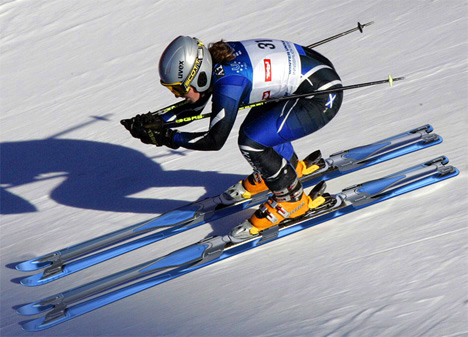|
Downhill
Skiing
 Image courtesy
of gizmodo.com
|
Downhill skiing
involves converting gravitational potential energy
into kinetic energy.
This conversion is done during the descent down the hill. The skier can therefore attain fast speeds. By using the technique of traversing across the terrain, the skier controls their speed. In order to maximize speed, minimal resistance to motion is sought, in the forms of air and snow resistance. A crouched position will reduce physical air resistance, and counter the velocity resulting in slowing down the skier. Snow resistance also affects speed in the same way as air resistance. Based on a skier’s experience, there are two techniques that can be used to slow down or execute a turn. One technique is “plowing”, where a skier skids around the turn, reducing the skier’s speed thru the generation of frictional resistance with the snow. By tilting the edge of the skis into the snow and pivoting in the desired direction, the skier skids through the turn. With the change of direction, the velocity has changed. The degree of turn and amount of braking is determined by the steering angle. The steering angle required for a slow turn is somewhere between zero and 90°. Another technique is “carving”. Carving is not skidding, as there is only a minimal level of friction between the ski and the snow. This allows the skier to ease into the turn and maintain their speed. |